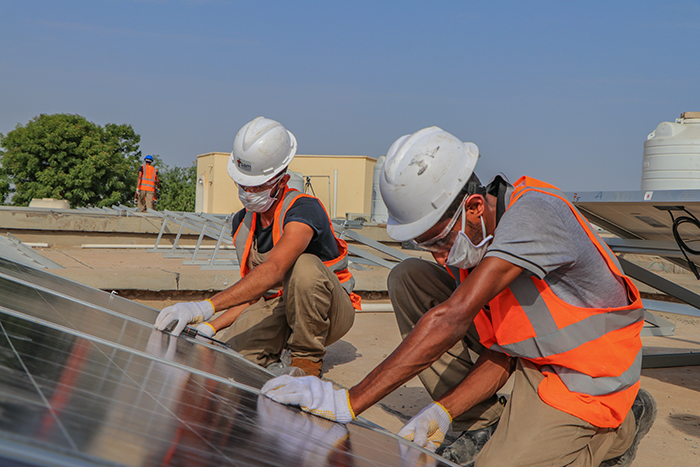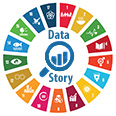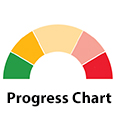Affordable and clean energy

Workers install solar panels to power a public hospital in Yemen, restoring operations affected by ongoing conflict.
© UNDP Yemenare pivotal to advance towards Goal 7 and meet climate objectives.
The number of people lacking electricity access grew for the first time in a decade
In 2022, although the global electricity access rate held steady at 91 per cent, 685 million people still lacked electricity, 10 million more than in 2021 due to population growth. This marked the first such increase in a decade. The setback is largely attributed to the disruptions of the COVID-19 pandemic and Ukraine conflict, which affected energy prices and markets. Those without access to electricity are predominantly in low-income households or located in remote areas.
Progress varies by region. Central and Southern Asia reduced the regional gap from 235 million people in 2015 to 33 million in 2022. Sub-Saharan Africa had a growing share of the global access deficit, at 83 per cent (or 570 million people) in 2022, up from 50 per cent in 2010. While access to electricity grew globally at 0.77 per cent annually on average from 2010 to 2020, the rate slowed to 0.43 per cent from 2020 to 2022. With projections indicating that 660 million people globally will remain unserved by 2030, achieving universal electricity access will require a 1.08 per cent annual increase. Investing in decentralized renewable energy, including standalone off-grid solar and mini-grids, together with electricity-as-a-service models holds significant potential to bridge the access gap.
Proportion of the population with access to electricity, 2022 (percentage)

Without faster progress, by 2030, around 1.8 billion people will still prepare meals using polluting stoves and fuels
In 2022, 74 per cent of the global population had access to clean cooking. The global access deficit fell to 26 per cent, down from 36 per cent in 2015. This still leaves around 2.1 billion people relying on polluting fuels and technologies, such as wood, charcoal, dung and crop waste, as their primary energy source for cooking. Without stepped-up interventions, around 1.8 billion people or 21 per cent of the world’s population could lack access to clean cooking by 2030.
Among the regions, Eastern and South-Eastern Asia and Central and Southern Asia have seen consistent improvements. By contrast, sub-Saharan Africa remains the only region where the deficit is rising; it could exceed 1 billion people without access by 2030. Globally, urban-rural disparities are stark, with 88 per cent of urban households compared to 54 per cent of rural households having access to clean cooking solutions. A reliance on traditional stoves and polluting fuels worsens health and environmental risks, particularly for women and children, who bear the brunt of cooking and fuel collection burdens.
Population without access to clean fuels and technologies for cooking, by region, 2010-2030 (millions)

Electricity is at the forefront in the shift to global renewable energy; hurdles remain in heating and transport
The share of renewable energy in the world’s total final energy consumption rose from 16.7 per cent in 2015 to 18.7 per cent in 2021. Excluding traditional forms of biomass, the share of modern renewable sources climbed gradually from 10 per cent in 2015 to 12.5 per cent in 2021. Traditional uses of biomass accounted for slightly over a third of total renewable energy consumption.
The electricity sector has emerged as a frontrunner in adopting wind and solar technologies due to their declining costs. Renewables constituted over 28 per cent of total final energy consumption for electricity in 2021, up from 23 per cent in 2015. This signals how the world’s capacity to generate renewable power is expanding at an unprecedented rate, presenting a tangible opportunity to triple global capacity by 2030, as agreed at the twenty-eighth session of the Conference of the Parties to the United Nations Framework Convention on Climate Change in 2023. Yet increases in renewable energy use remain constrained in the heating and transport sectors, which account for four fifths of total final energy consumption.
Share of renewable sources in final energy consumption and by end use, 2015 and 2021 (percentage)

Impressive overall average gains in electricity generated with renewables obscure slow progress in some places
Globally, per capita installed capacity for generating electricity with renewable energy nearly doubled from 250 watts in 2015 to 424 watts in 2022. The past five years saw an all-time high compound annual growth rate of 8.1 per cent. Developing countries witnessed substantial expansion from 155 to 293 renewable watts per capita. Developed countries saw a milder rise from 691 to 1,073 watts per capita, even as they have 3.7 times more installed capacity than developing nations. Disparities are more evident for the LDCs, LLDCs and small island developing States, which in 2022 achieved 39, 103 and 101 watts per capita, respectively. At current rates of expansion, LDCs would require nearly 41 years, LLDCs 38 years and small island developing States 11 years to match the 2022 levels in developing countries. This wide divide indicates an urgent need to bridge gaps in achieving equitable access to sustainable energy.
Installed capacity for renewable electricity generation, 2015 and 2022 (watts per capita)

Global investment needs to triple to rectify slow gains in energy efficiency
Global primary energy intensity improved from 4.9 megajoules per dollar (2017 purchasing power parity) in 2015 to 4.6 in 2021. The energy intensity improvement rate for 2021 was only 0.8 per cent, however, influenced by a robust economic recovery after the pandemic and a shift towards energy-intensive industries. The rate has remained under the 1.2 per cent average observed during the last five years.
To meet the Goal 7 energy efficiency target by 2030, annual improvements must now average around 4 per cent. Key actions include switching to more efficient fuels, such as by electrifying final uses and providing universal access to clean cooking. Improving the technical efficiency of equipment and processes and using energy and materials more efficiently are also important. Further, global investment in energy efficiency would need to triple by 2030. High interest rates pose a challenge as financing new projects has become more expensive, particularly in emerging markets and developing economies.
International public financial flows for clean energy rebounded in 2022 but remain insufficient
In 2022, international public financial flows supporting clean energy in developing countries rebounded to $15.4 billion, an increase of 25 per cent over 2021 yet still around half the 2016 peak of $28.5 billion. This declining trend could impede progress towards Goal 7, especially for the LDCs, LLDCs and small island development States.
Financing commitments have become marginally more widely distributed. In 2021, 80 per cent of commitments went to 19 countries, a figure rising to 25 in 2022. Trends in technology over the last decade have shifted investments from hydropower to solar energy and multiple/other renewables. In 2022, almost half of flows went to multiple/other renewables. Solar energy received 35 per cent, wind energy 11 per cent and hydropower 7 per cent.

